
The Boarding Houses

“The Boarding Houses were owned and run by their boarding house masters. Most Arab boarding-house masters were former seamen who had chosen to settle in South Shields and set up their cafes and small shops around the Laygate area. The boarding house master played a key role in the lives of the Arab seamen. They would offer the seamen assistance in securing their next ship, money if the men ran out and advice if they needed any kind of help.” 2
Early Boarding Houses
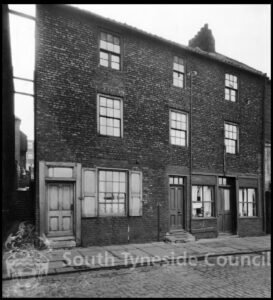
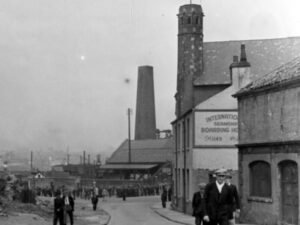
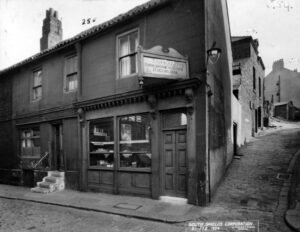
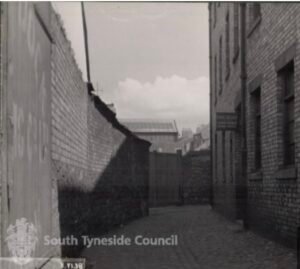


Early Yemeni Establishment in South Shields
1894
Ali Said settles in South Shields
1906
other Arab seamen known to have been in the town
1908
Ali Hassan shipping out from North East Ports.
1909
Ali Said running a licensed seamen’s boarding house for Arab seamen in Nile Street, Holborn.
1913
Ali Hassan opens an Arab boarding house at 93 and 95 East Holborn.
1913
20-30 Arabs living in East Holborn
1916
Records of Muhammad Muckble at 5 East Holborn and Abdul Rahman Zaid of 63 Thrift Street
(3
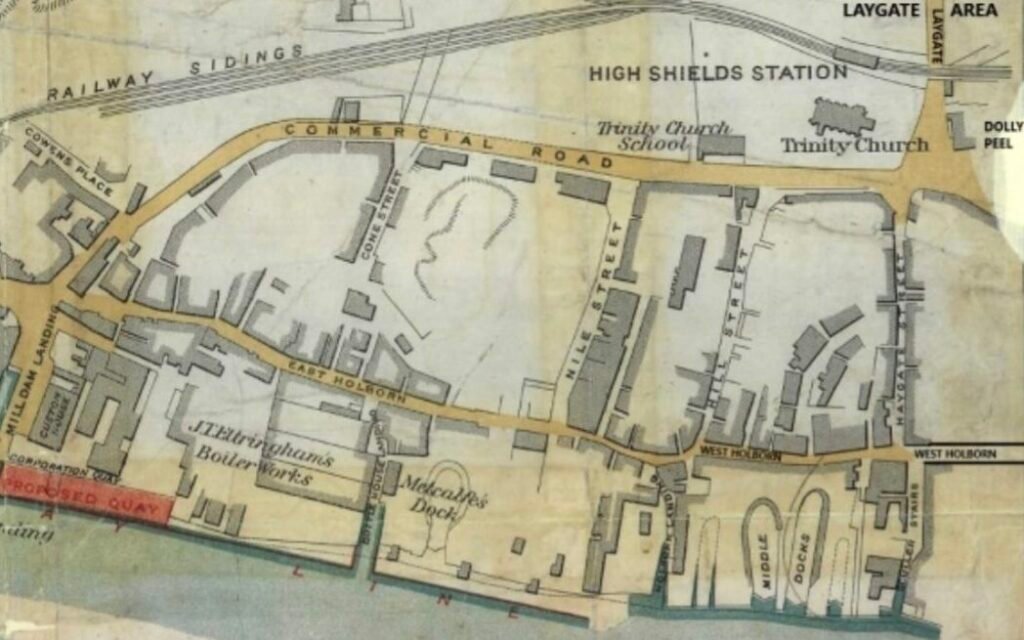
1883 map – (c) South Tyneside Libraries
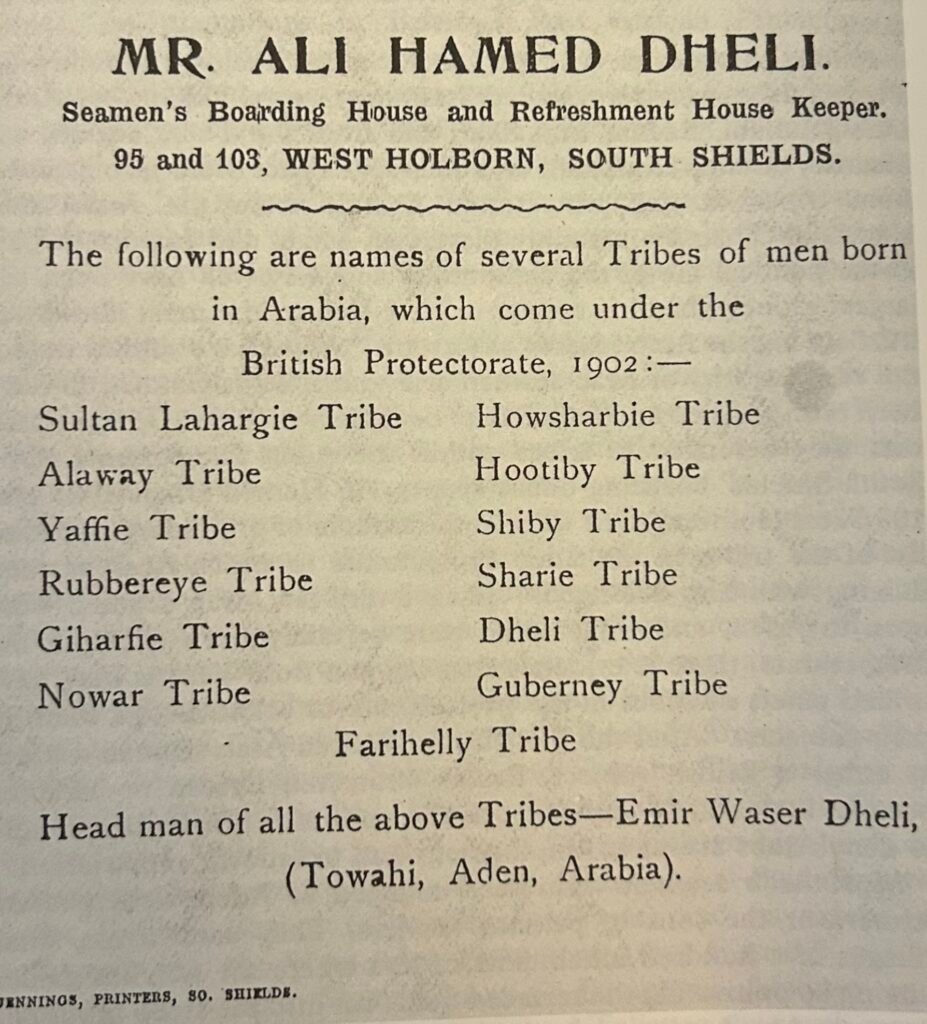
(c)Public Records Office PRO CO 725/21/94
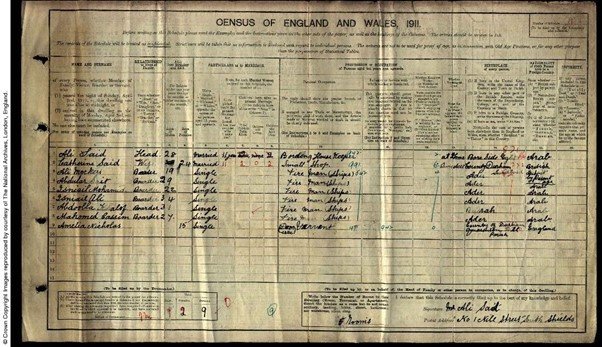
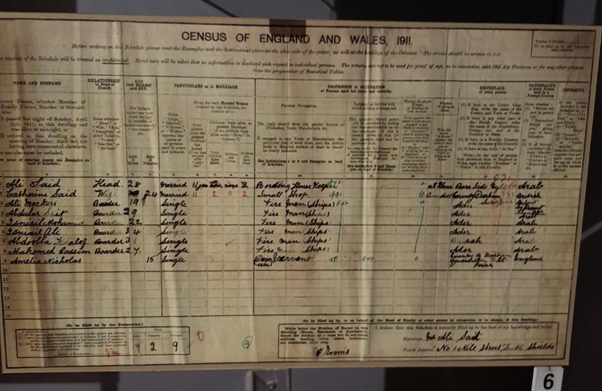
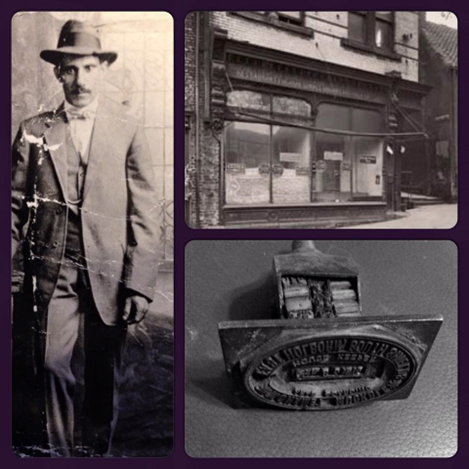
Mohamed Muckble, his boarding house and stamp showing the date March 08th 1915 – with thanks to Norman Ghaleb
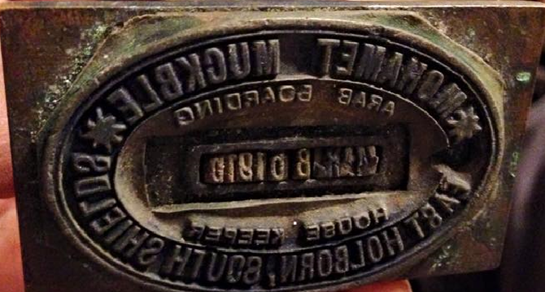
of ‘Mohamet Muckble Holborn,
South Shields –
Arab boarding house keeper’

census for 2 Regent Street -boarding house of Said Mabrouk

(c) National Archives, England

(c) The Shields Gazette 30/09/1930

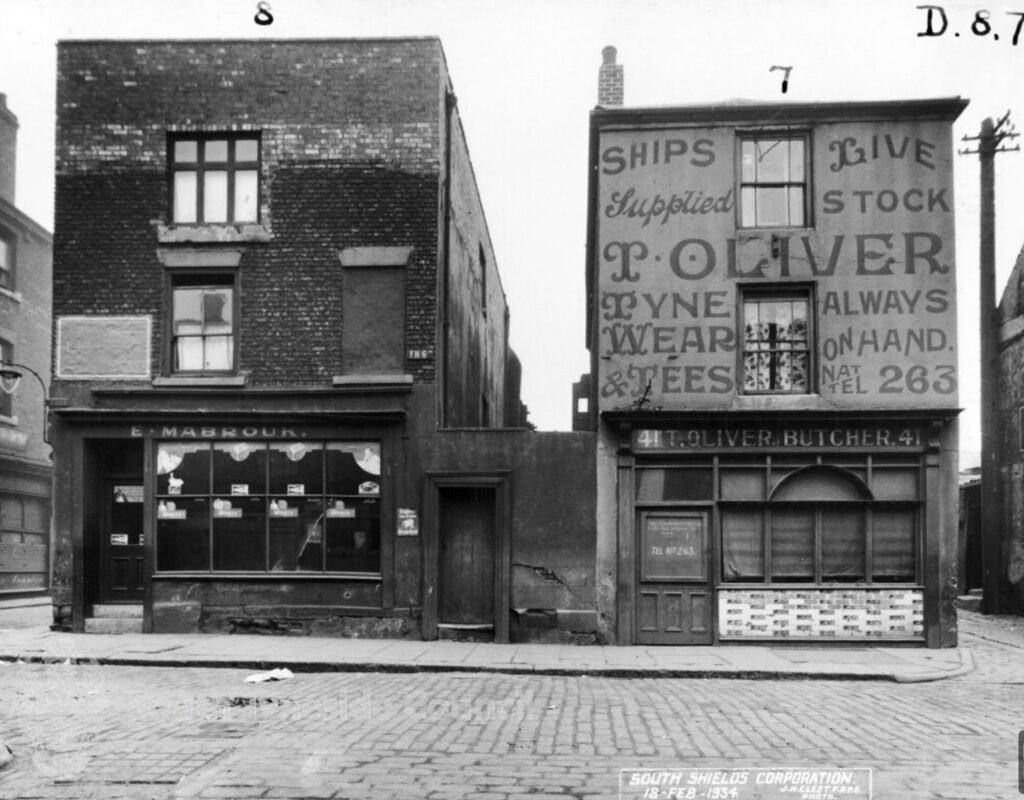
Mabrouk family Dining Rooms, at 39 West Holborn. They also had licensed lodgings at 2 Laygate. (c) South Tyneside Libraries

A bed in an unknown Yemeni boarding house (c) South Tyneside Libraries
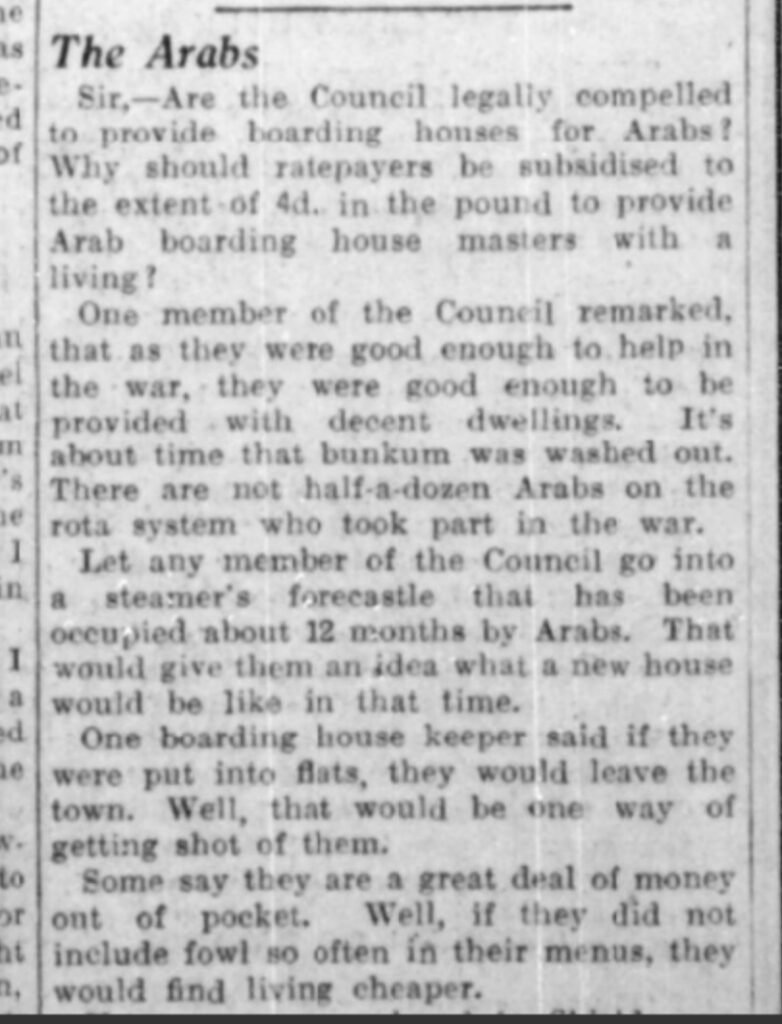
(c) The Shields Gazette 04/03/1935
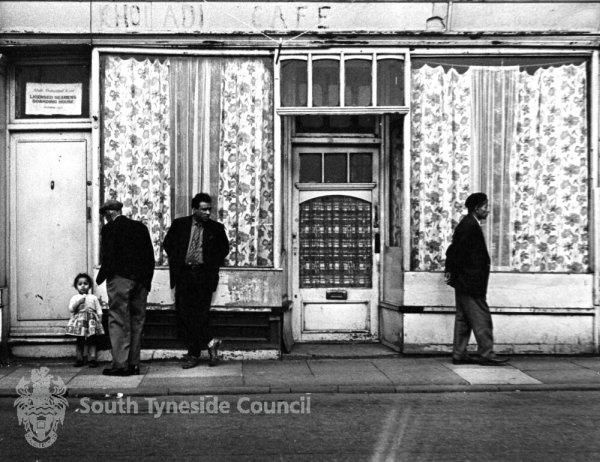
kholaidi cafe – Ali Fasa pictured with his back to the camera (c) South Tyneside Council
Later Years
The two boarding houses referred to were one on St. Judes Terrace owned by Abdul Ghani (above) and 50-52 Brunswick Street owned by Mr Hussein (Al-Sayyadi).
In a conversation with Mrs AbdulGhani, she explained that the question of which house a seamen decided to lodge in would often depend on tribal connections. Lodgers would reside in the boarding house belonging to those from closest to their home village. For example, as Mr and Mrs Abdul Ghani were both themselves from the Al-Shimary tribe, their boarding house attracted other ‘Shimarys’ as well ‘Khulaidis’ of whom there were many.
Mr Hussein, however, was the only seaman from his Al-Sayyadi tribe in South Shields for many years and therefore filled his boarding house with people from villages near to where he originated. His lodgers included both friends and Somalis who by Mrs Abdul Ghani’s account, did not stay in St Jude’s Terrace.
Abdul Ghani – St Judes Terrace

Mohamed Al-Sayyadi (Ahmed Ali Hussein)
50-52 brunswick street
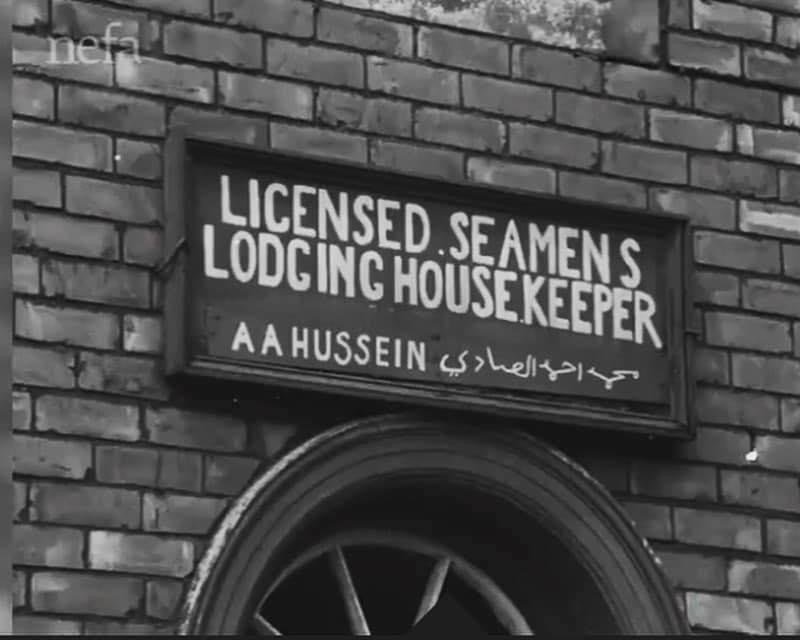

(c) The Shields Gazette 27/09/1991
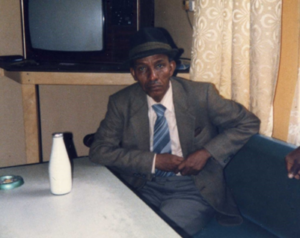



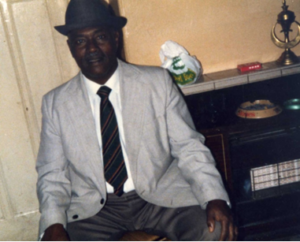
A short film was made on BB2 program 10×10 in 1992 by Tom McGorrian. It focused on the Hussein’s boarding house of 50/52 Brunwick Street.
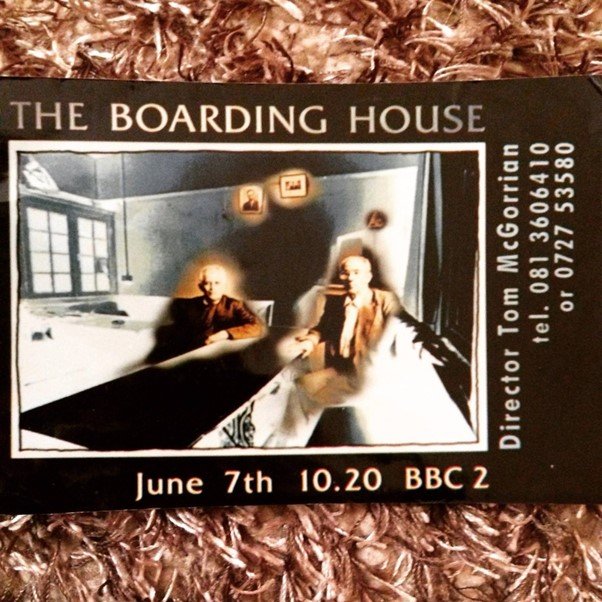
(c) Tom McGorrian – with thanks for permission to show
Snapshot Of Boarding House Life
Past Times
Many of the wider South Shields community hold precious memories of Yemeni food. Many remember the taste of the food from visiting friends or boarding houses in childhood.
When asked, some said they could ‘still smell’ its aroma whilst others had been left touched by the humble, communal way of eating together in the boarding houses based on Islamic tradition. Here are some examples of Yemeni dishes relished by the community.
Some of the other card games played included poker and bellote.


Peter Fryer and David Campbell – The boarding house
(c) Peter Fryer – with thanks for permission to display.
r
Building of historical importance
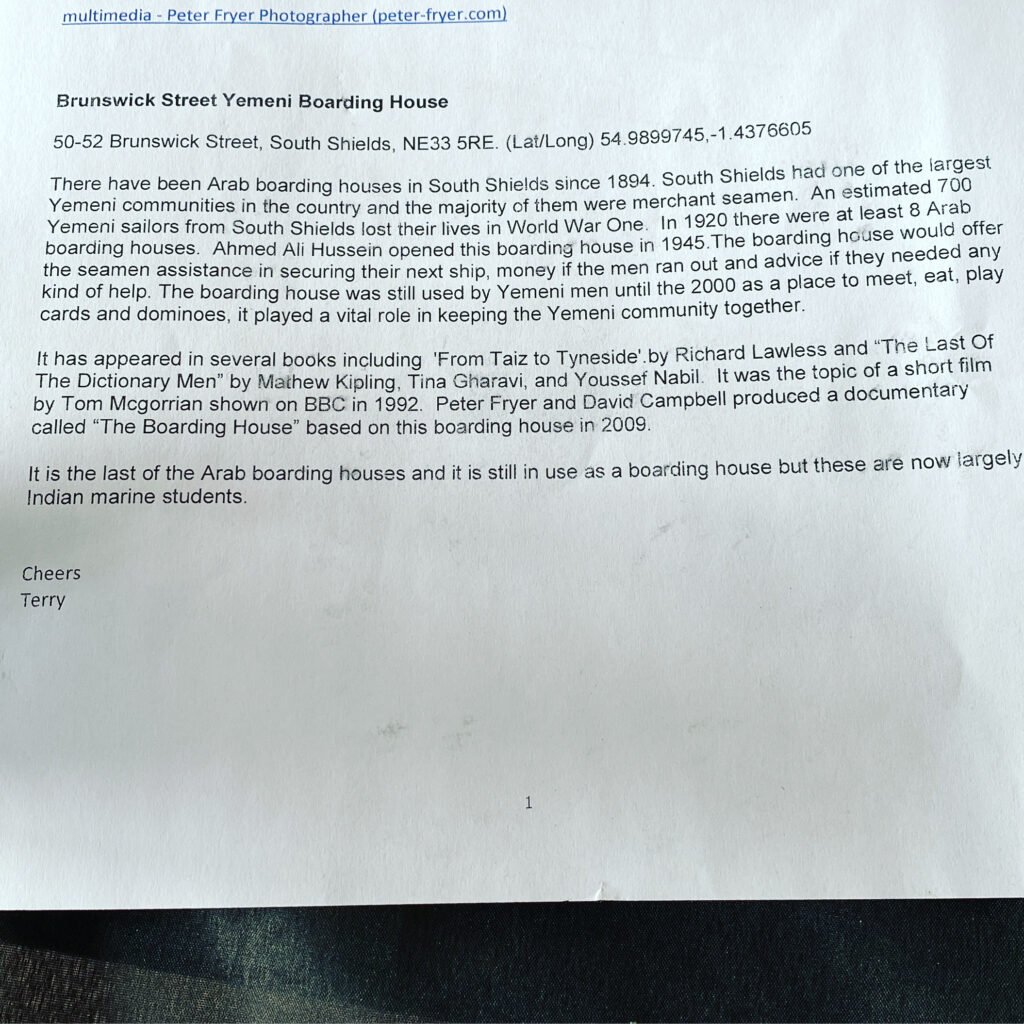
Terry Ford nominated the last remaining boarding house in South Shields – Brunswick Street as a building of historical importance locally. It was decided by South Tyneside Council that this boarding house should be added to the list.
In 2023, this boarding house, ‘Brunswick Street, Yemeni Boarding House’ was added to South Tyneside Council’s list of buildings of local importance alternatively known as local heritage assets. This list contains “buildings, structures or spaces that do not meet the criteria for national listing by Historic England but are still important to the people of South Tyneside”
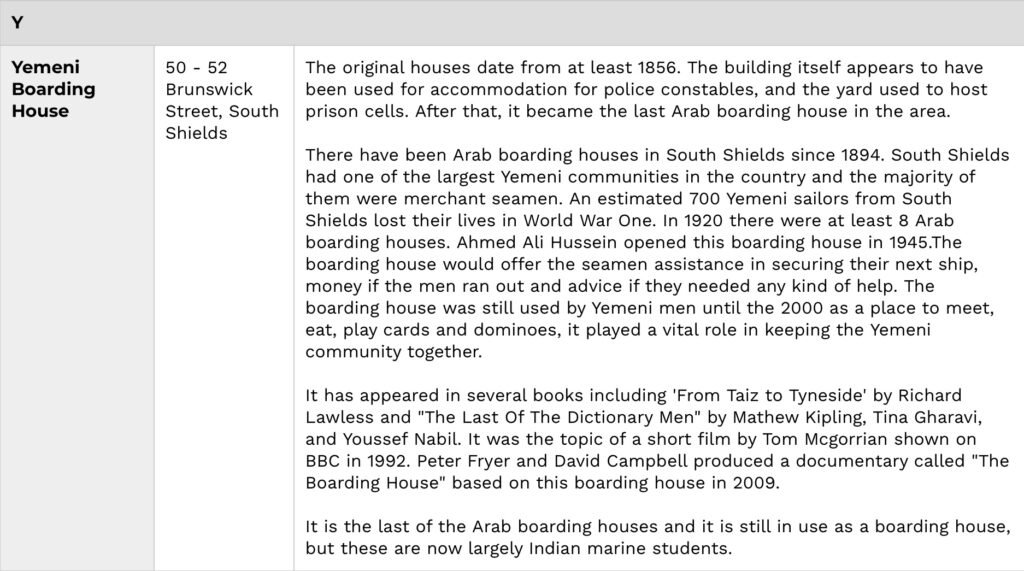
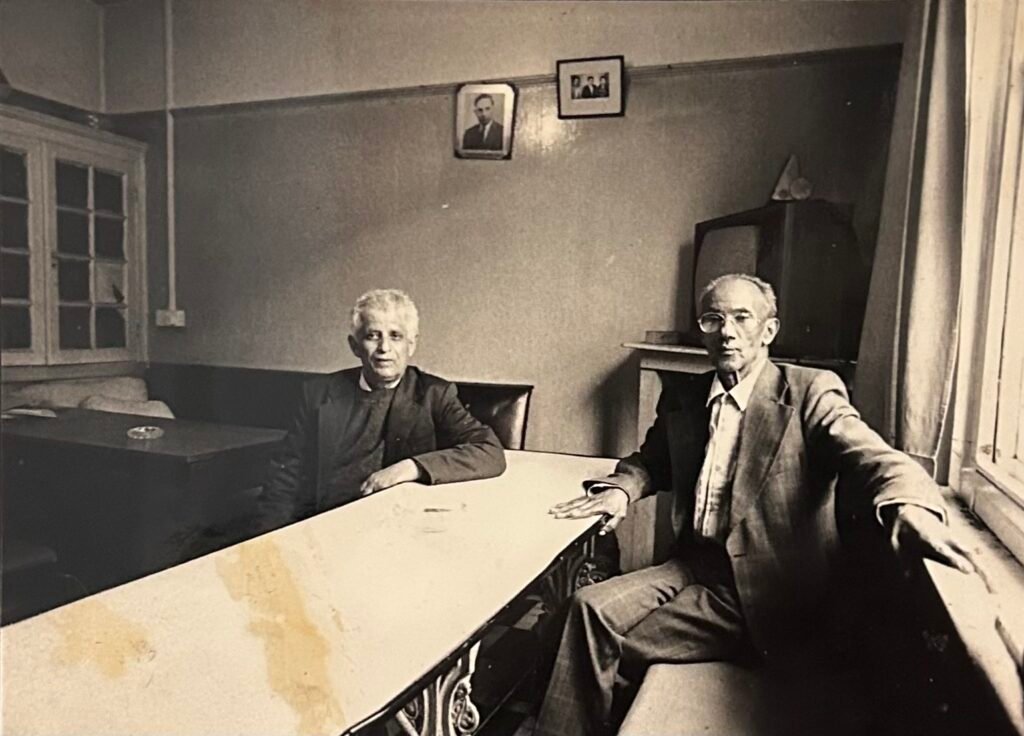
Dalali and Yusef Abiyan (c) in Sayyadi’s boarding house (c) Leyla Al-Sayadi
The End of boarding Houses
Following the decline of the shipping industry, port towns were hit hard. South Shields no longer runs as a hub of maritime activity and simultaneously, the demographic of the population has changed. At the time of writing in 2025, only one boarding house exists loosely as a boarding house. It’s occupants no longer Yemeni seamen but college marine students. Most of the original 1st generation Yemeni seaman have passed away leaving their descendants, ‘Sandancers’ with often mixed, Yemeni heritage.
- Lawless, R.I. (1995). From Taʻizz to Tyneside. p. 162 ↩︎
- Ibid., p. 162 ↩︎
- Ibid., p. 12-13 ↩︎
- Ibid., p. 42 ↩︎
- Ibid., p. 162 ↩︎
- Ibid. ↩︎
- South Tyneside Council. (2020). Local List A to Z – South Tyneside Council. [online] Available at: https://www.southtyneside.gov.uk/article/18506/Local-List-A-to-Z#y [Accessed 27 Jul. 2025]. ↩︎
